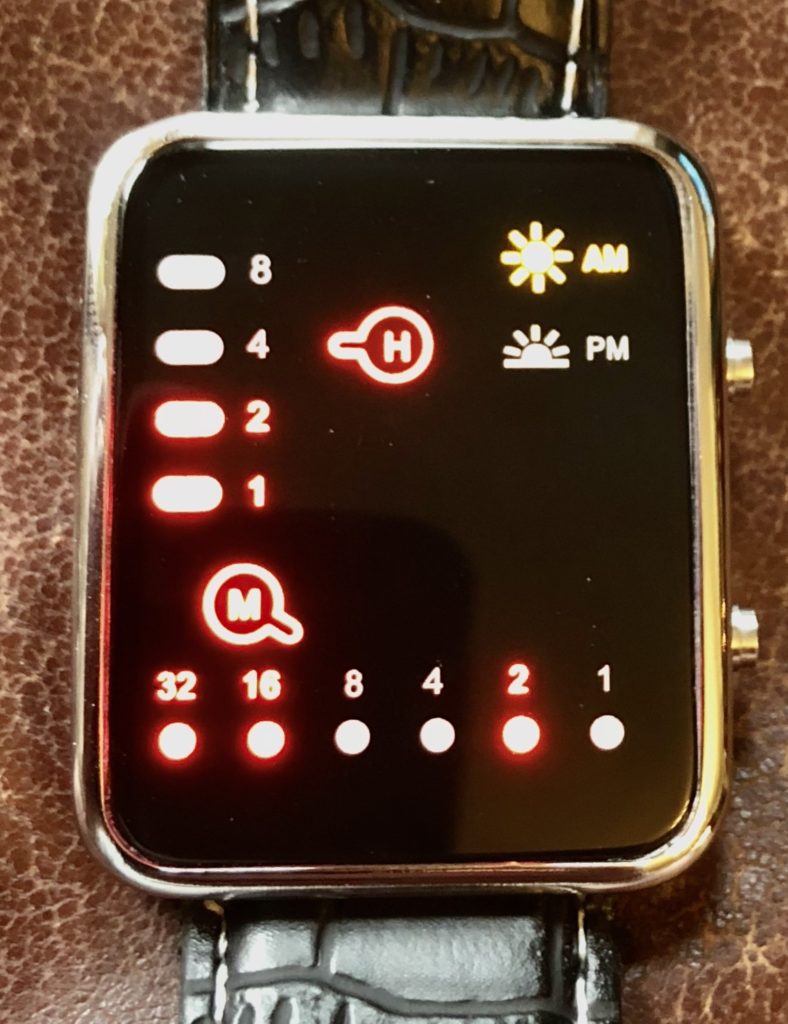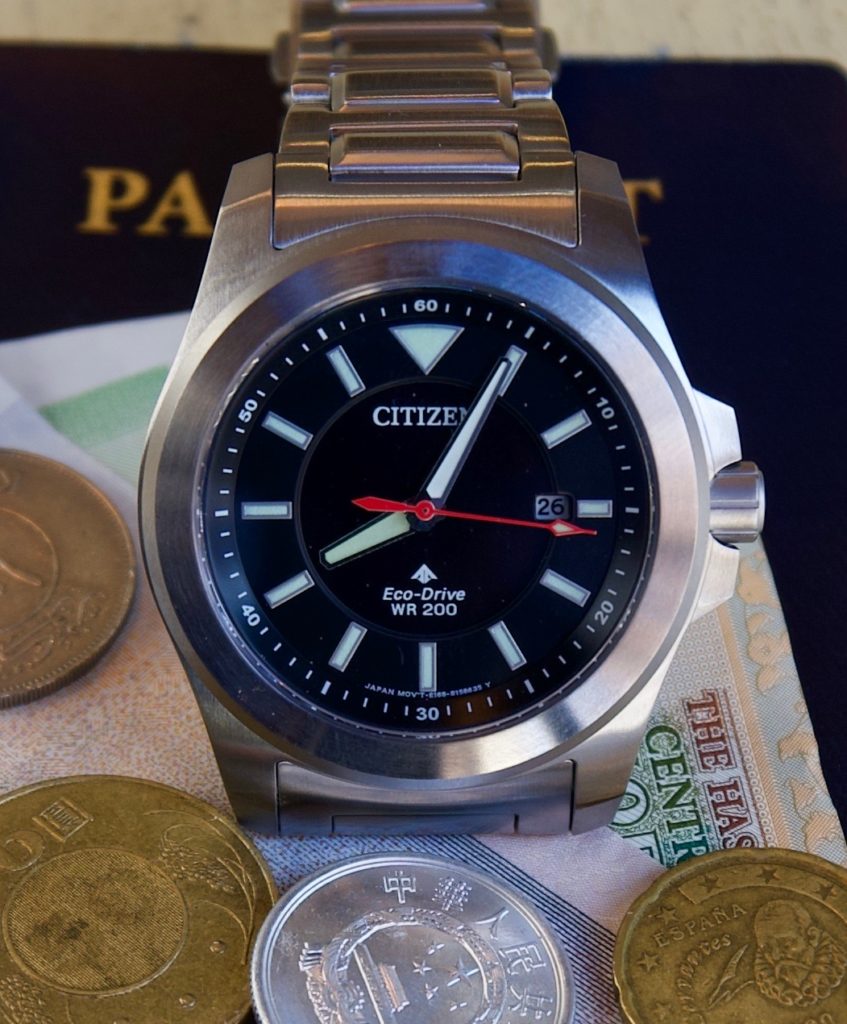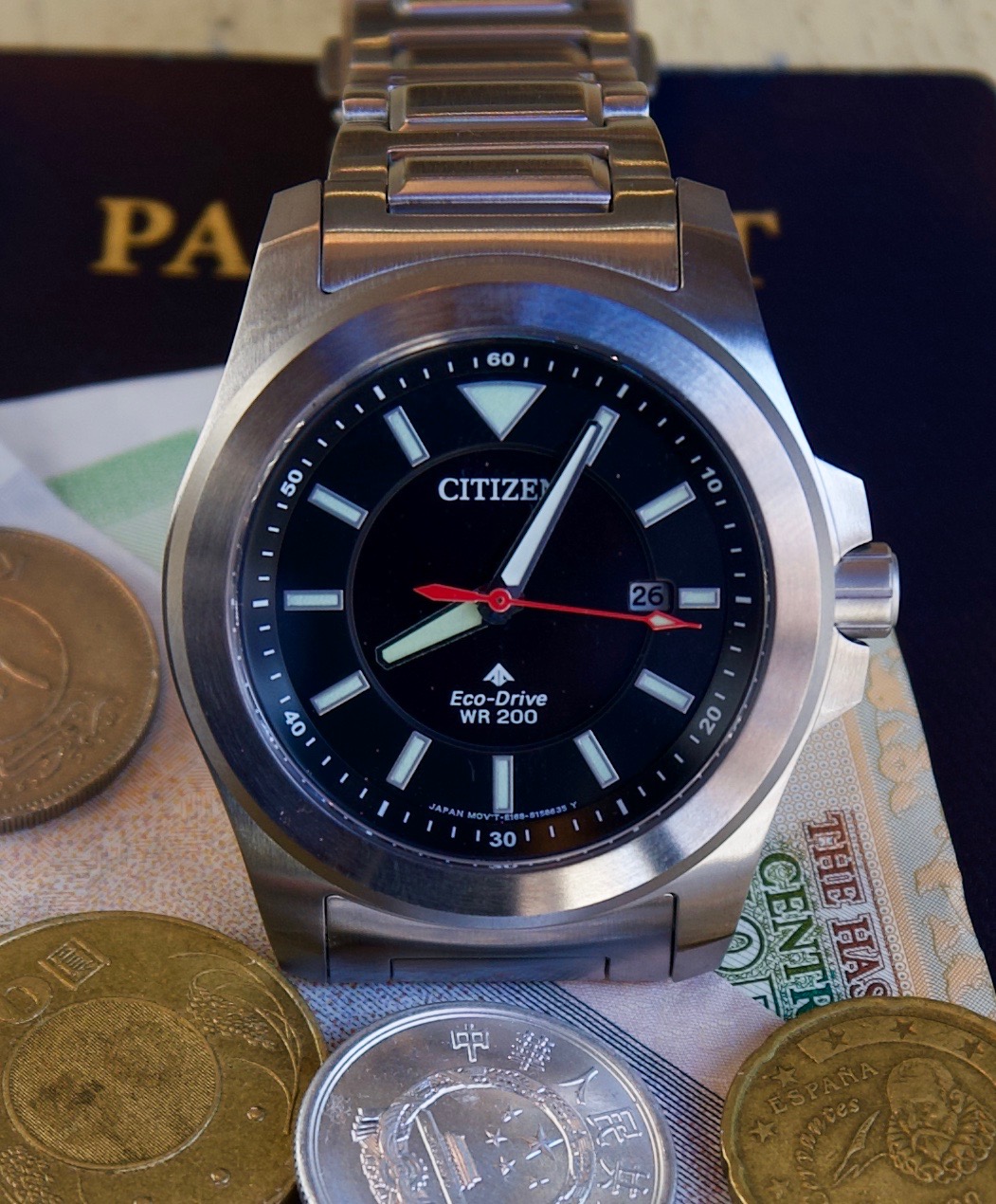Think about your travel watch now so you’ll never have to think about it while traveling.
Let me make this clear right at the outset: I do not want to think about my watch–especially when I’m traveling. I want to put it on and forget about it, as it might be days before I remove it, depending on where I am and what I’m doing. I don’t want to worry about the battery dying, or having to recharge it, or whether or not I should take it off to protect it before I do something exciting/foolish. I want my travel watch to look after itself, and accurately, reliably tell me the time of day—that’s its only job. Unfortunately, in the course of my travels, I have occasionally been forced to think about my watch, usually in those very special moments when my latest watch finds yet another new way to fail spectacularly and screw up my travel plans.
When my last go-to travel watch failed (dead battery this time, not user-serviceable) with no warning when I was far from home, I got mad, made a checklist of all the interesting ways that my other watches have failed in the past, and set out to find one watch—the ultimate grab-and-go watch, the field watch par excellence—that checks every box on that list. And rather than throw a dozen candidates at you, I found you the perfect travel watch. You’re welcome.
If you’re like most travelers, time is more precious to you than money. While you don’t want to be a compulsive clock-watcher while traveling, all your best-laid plans will go awry if you can’t accurately track the time when you’re on the go. You’ve got planes and trains to catch, tides to monitor, restaurant reservations and curtain times to think of. If you’ve ever looked down in horror at your watch and realized that the hands haven’t moved since the last time you checked it, then you understand the need to have a watch you can truly count on.
Get the Best Travel Watch
You need one watch that is accurate, reliable, imminently readable, low-maintenance, durable, versatile, affordable, effortlessly rechargeable in the field, and easily adaptable to a wide variety of environments. Can your travel watch do this?
- You need ONE travel watch. Yeah, yeah, I know, you’ve got a watch “library” with a fistful of slick timepieces for every outfit and occasion. That’s fine but, when traveling, pick one, and leave the others at home. Traveling smart means traveling light: ONE watch only.
- You need a RELIABLE watch This is the big one. Don’t buy the cheapest watch; it’s a false economy to do so. Buy one with a great track record from a famous maker with a reputation for excellent build quality.
- You need an AFFORDABLE watch. You want a watch that is well-made but fits your budget. Losing something pricey and precious while on the road can cast a pall over your trip. Expensive, showy watches can also make you a target for thieves. The threshold of affordability is different for everyone, but for the purposes of this article, we’re going to draw the line at $400. And—no, I don’t want to hear your defense of a $10k watch that you think is a travel watch because it has an illustration of the azimuthal map on its face—sorry. (Note: wristwatches routinely sell for significantly less than their MSRP, so I’m using real-world pricing and availability to determine the actual price.)
- You need an ACCURATE watch. This one’s easy: Quartz watches are typically less expensive than mechanical watches, and more accurate though only by the tiniest of increments.
- You need a DURABLE watch. Quartz wins again. You need a watch that can take accidental punishment and come up smiling, and quartz wins that category hands down. Quartz movements are much less sensitive to variations in temperature, physical abuse, shocks, and falls than their mechanical cousins. Look for a watch with a titanium case and bracelet, and crystals made of synthetic sapphire.
- You need a watch that WON’T RUN OUT OF JUICE. This is a big one. Murphy’s Law states that your quartz watch battery will last for many months—even as long as a couple of years—until it unexpectedly kicks the bucket just in time to make you miss your flight. For a while, my favorite travel watch was a stainless-steel, quartz Swiss watch. Insidiously, before the battery died without warning in Budapest, it first gradually slowed down, so by the time I noticed that the time was off, I’d already missed a train by 30 minutes. Worse, I discovered that said battery was not user-serviceable, and could only be replaced through an authorized service center equipped with special pressurized equipment to ensure water-resistance. To put it mildly, you don’t want to waste a moment of your travel time worrying about this stuff so go for either an automatic movement (powered by the natural movement of your wrist) or—even better—a quartz movement driven by a solar-powered battery.
- You need a WATER-RESISTANT watch. Unless you’re actually a scuba enthusiast doing deep dives, 200m or 20 ATM/Bars is a more than suitable level of water resistance for your travel adventures. (If that seems like overkill, that’s because watch water-resistance is… complicated.)
- You need a watch with a SCREW-DOWN CROWN: Another real advantage of having a watch with at least 200m of water resistance is that they tend to feature screw-down crowns, which are much less likely to be accidentally triggered than push/pull crowns that pull out to different stages to make adjustments. I have looked down at my watch to discover that something—my shirt sleeve?—had somehow tugged out the crown one stop without my noticing, bringing the watch to a halt. Dive watches have screw-down crowns, neatly eliminating that potential problem. Another desirable feature to look for are shoulders on either side of the crown that help protect it.

- You need a watch that is EASY TO READ. Get a watch with a clean, uncluttered display featuring a luminous dial. You don’t want to have to hunt for a light source in order to read your watch. Luminous dials are slightly preferable to models that light up to illuminate the watch face as those can be potentially disruptive to those around you in some situations (don’t be that guy who turns on the arc light on his wrist during the quiet moment at the theater.) On a side note, some watch face designs are either so minimal that you have to settle for “close enough” (I’m lookin’ at you, Movado Museum watch) or so outrageously baroque that checking the time becomes an exercise in creative problem-solving (anything by Tokyoflash.) A luminous dial with a clean, clear design, easily readable numerals, and indicators at every hour does the trick.
- You need a VERSATILE watch. Sure, that big, honking day-glow sports watch has every schmancy complication to set a techno-geek’s heart racing. It will also land you a nice seat at the kid’s table when you return to the surface and want to hit the cool restaurant that night. Choose a simple, subtle design that can scale up or down depending on the setting, and will easily harmonize with your travel wardrobe.
- You need a watch with a METAL WRISTBAND. Leather wristbands are comfortable and stylish, but they don’t do water. They can get saturated enough that they sag off your wrist to go plummeting to the bottom of the bay as you’re pulling in your pot of angry Dungeness crabs (true story.) Canvas, plastic, and rubber wristbands are fine and funky but not as tough as metal, and they generally don’t scale up very well. I like white metal (stainless steel or titanium) watches for travel as they arguably go with everything. Note: An estimated 15-20% of the population suffers from allergic reactions to the nickel content in stainless steel and EWWW. Look for metal wristbands made of titanium or featuring titanium coatings, as they are naturally hypoallergenic, as well as being tougher and lighter than mere stainless steel.
Spare me the legwork—which watch does it all?
There were many watches that checked most but not all of the criteria on this list, but one wristwatch nails every checkbox on this list with ease and I gave it away right at the top: the Citizen Eco-Drive ProMaster Tough.

Citizen has been around for 100 years, and they created the first solar-powered wristwatch way back in 1975. Fully charged, their Eco-Drive watches can run for six months in total darkness, so you’re good to go for your planned half-year winter vacation in Antarctica. For the rest of us, the Eco-Drive watches can draw energy from any available light source—anything from bright sun to cloudy days to low artificial light—to run continually without you ever having to wind, replace a battery, or plug into an outlet.
The Citizen ProMaster Tough offers 20ATM of water resistance, is highly shock resistant, anti-magnetic, features a sapphire crystal, and is made of stainless steel with the company’s proprietary titanium coating which not only makes it hypoallergenic, but offers 5X the scratch resistance of ordinary stainless steel.
The design is subtle and clean—almost austere—and the uncluttered face and luminescent hands and hour markers made it easy to read. That simple, spare design also allows it to scale up or down depending on your need. While I recommend the black dial for its design versatility, it’s also available with a green face, as well.
Runner-up
The Seiko Prospex Padi Solar is a handsome timepiece, and is similarly priced to the Citizen ProMaster Tough, but when you compare the two, the Seiko is significantly less… well, tough. Citizen invented the solar watch, while Seiko is considerably newer to the game, and the anecdotal accounts from online commenters seem to indicate that Seiko doesn’t have Citizen’s reliability record. Seiko uses their “Hardlex” mineral crystal instead of the stronger, more premium sapphire crystal found in the Citizen. And while both watches are made of stainless steel, the Seiko lacks the Citizen’s titanium coating so it’s not hypoallergenic, and more prone to scratches than the Citizen.
Hey, but what about…
GMT watches?
I own several (including a couple of sweet Shinola-made Filsons), and the GMT function is fun, but hardly essential. Look, if you know the difference in the time zones of the places you’re trying to monitor, just do it the old-fashioned way and add or subtract the difference.
The Apple Watch?
Cool toy, no argument, but it fails the water-resistance requirement, as well as the price point test, particularly if you spring for the metal mesh wristband. It also needs to be recharged every 14-16 hours, so doesn’t make the grade here.
My smartphone?
I love my iPhone but it runs out of juice in about ten hours. Carry a good portable charger (and I do) and you can dramatically increase the time between charges, sure. But their water-resistance is meager, to say the least (2m for up to 30 minutes). And yes, there are after-market cases that can bolster that protection. But if you want true peace of mind, especially if you do any diving, swimming or snorkeling, you need a watch specially designed to offer a high level of water resistance, typically at least 20ATM/200m. On a more everyday level, digging your smartphone out of your pocket every time you need to reference the time is a hassle and, particularly in an urban area, clutching one out in the open, with your attention concentrated on it and your local awareness on hold, makes you a target. That $1k portable computer is easily snatched from your hand, and using a wristwatch to check the time allows you to keep that phone in your pocket more of the time. Nothing replaces the ease of glancing down at your wrist to instantly know what time it is.
Buy it, wear it, forget it.
One of the reasons I love travel is that I have the opportunity to be the best version of myself. That best version of me says screw status-seeking and wasting money on a needlessly expensive bauble when that money could be better spent buying a round for a new friend, or funding an experience that will transform you as a person. And that’s what time it is.








